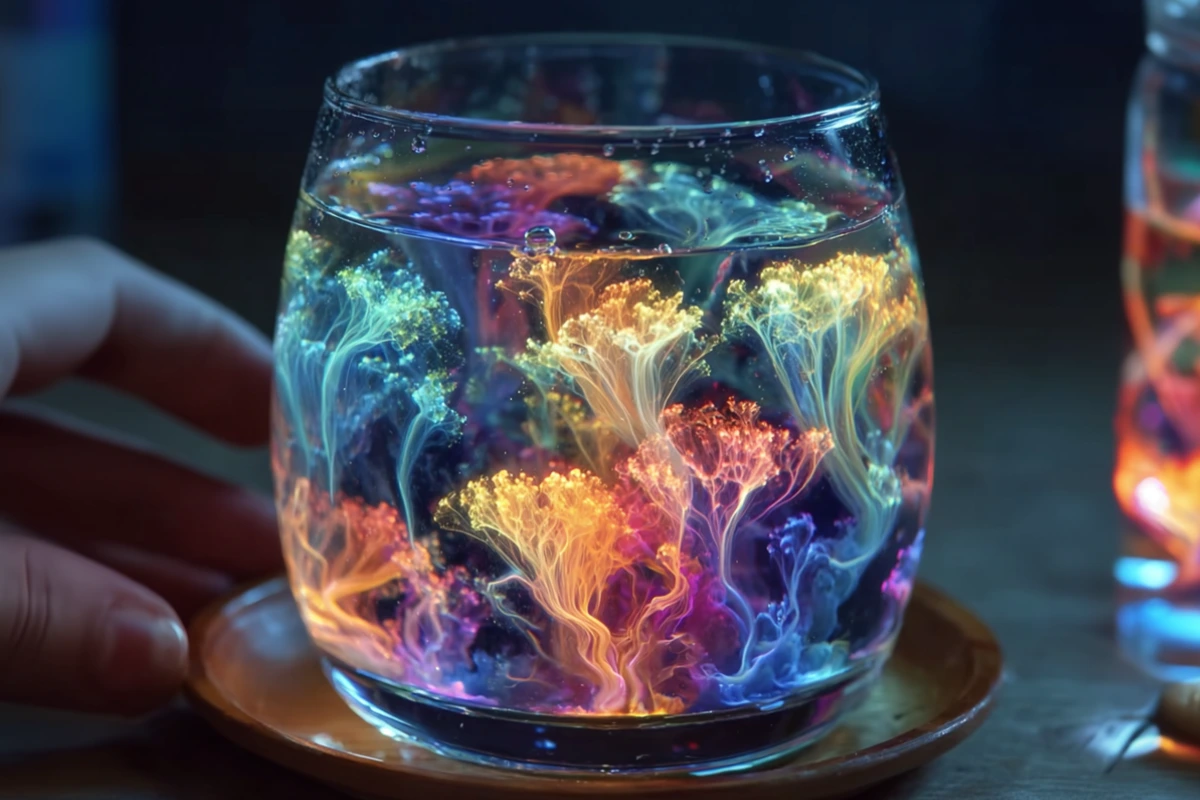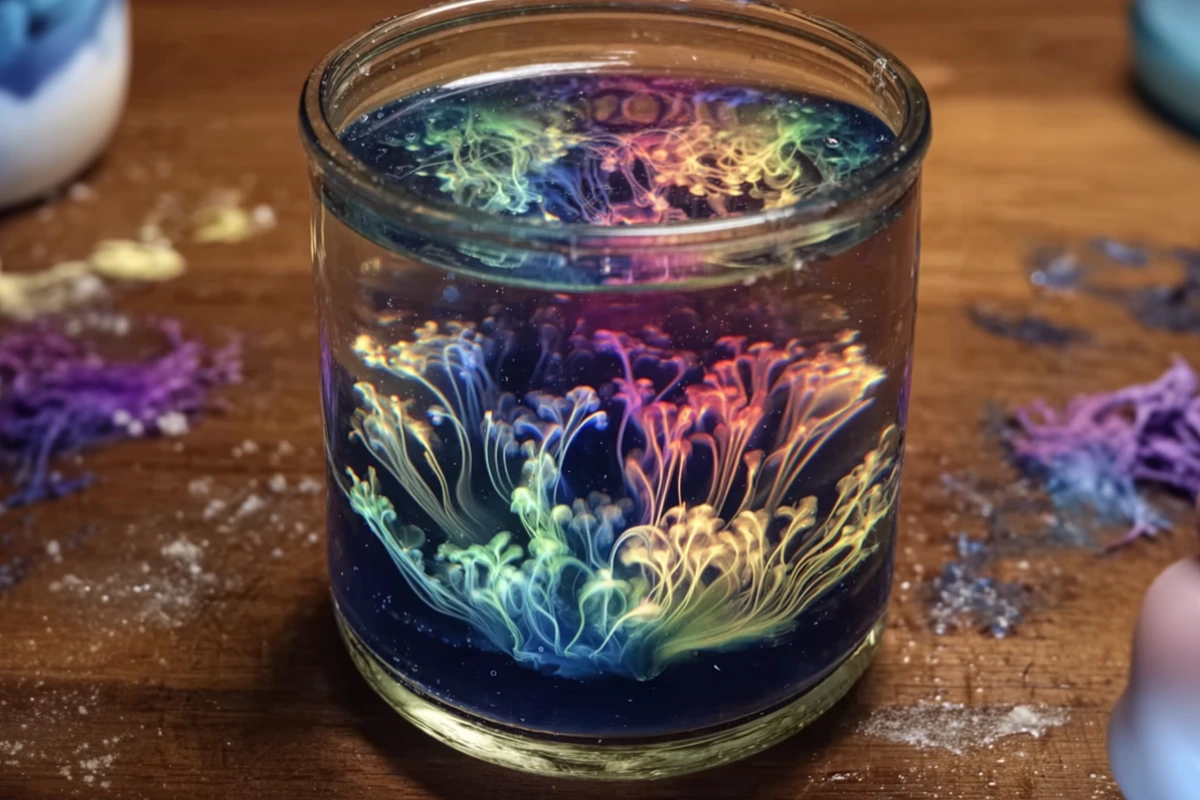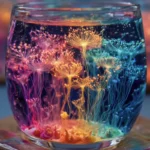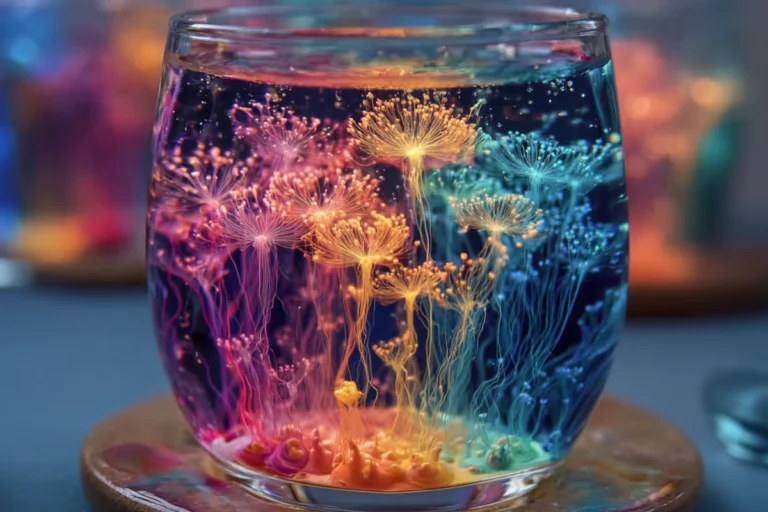Introduction
Let’s be honest—science experiments are way more fun when they look like magic. And if you’re looking for an activity that’s easy, low-mess, and totally mesmerizing, Fireworks in a Cup checks all the boxes. This colorful project isn’t just beautiful to watch, it’s a sneaky little science lesson wrapped in a rainbow.
Whether you’re a parent trying to wow your kids on a rainy afternoon or a teacher looking for a cool classroom demo, this is a go-to favorite.
What Is “Fireworks in a Cup”?
Imagine this: tiny droplets of color falling into a glass of water and bursting like silent fireworks. That’s what this experiment is all about. By layering oil and food coloring and watching them collide with water, you create an explosion of color that swirls and dances right before your eyes.
And the best part? You only need a few everyday kitchen items to make the magic happen.
Materials You’ll Need
Ingredient Checklist (Per Cup):
-
1 cup warm water (clear glass recommended)
-
2–3 tablespoons vegetable oil
-
4–6 drops of food coloring (multiple colors for better effect)
Optional Tools:
-
1 clear drinking glass
-
1 small bowl
-
1 fork or toothpick

Step-by-Step Instructions
Step 1: Fill Your Fireworks Base
Grab a clear glass and fill it about ¾ full with warm water. The warmth helps the colors spread faster and more vividly, so don’t skip this step!
Step 2: Create the Color Layer
In a separate small bowl, add 2–3 tablespoons of vegetable oil. Then, drop 4–6 drops of food coloring into the oil. Don’t stir just yet—notice how the drops sit like tiny beads in the oil.
Now, take a fork or toothpick and gently swirl the oil just enough to slightly break up the food coloring. You’re not blending; you’re teasing the droplets apart.
Step 3: Let the Fireworks Begin
Pour the colorful oil mixture into the warm water and wait for the magic. The food coloring droplets will slowly sink through the oil and then burst into vibrant streaks in the water, just like mini fireworks underwater.
The Science Behind It
Why Oil and Water Don’t Mix
Water and oil are like the classic odd couple—they just don’t mix. That’s because water is polar (it has a positive and negative end), while oil is non-polar. This difference means they naturally separate.
How Food Coloring Behaves
Food coloring is water-based, so when it finally breaks through the oil layer, it mixes with the water and creates those beautiful bursting effects.
Surface Tension Magic
The initial resistance you see before the drop sinks is caused by surface tension. When the coloring finally breaks through, the surface tension pops—and ta-da! Fireworks!
Tips for the Best Results
-
Use a clear glass so you can fully appreciate the visuals.
-
Warm water speeds up the process and intensifies the swirls.
-
Don’t overmix the oil and food coloring—a light stir creates the best effect.
Make It a Learning Moment
Ask Questions:
-
What do you think will happen when we mix oil and food coloring?
-
Why do the colors take time to drop?
-
Which color bursts fastest?
Expand the Experiment:
-
Try adding one color at a time and watch the differences.
-
Time how long it takes for the colors to reach the bottom.

Adding a Festive Touch
This experiment is perfect for holiday fun:
-
Fourth of July? Use red, white, and blue drops.
-
Birthday parties? Set up a DIY “fireworks” station for kids.
-
New Year’s Eve? Go for gold and silver with a touch of glitter (kid-safe versions, of course).
Variations to Try
Switch Up the Oil:
Canola oil, olive oil, or baby oil work too. Each gives a slightly different look.
Add Sparkle:
Tiny edible glitter or sparkle gel can add a whole new dimension. Just don’t go overboard!
Cold Water vs. Warm Water:
Repeat the experiment with cold water and observe the difference in color movement. Great way to talk about temperature and density!
Safety First
Even though this is a kid-friendly experiment, you still want to make sure everything runs smoothly.
Kid-Safe Setup:
-
Use non-toxic food coloring.
-
Lay a towel under the glass to catch spills.
Adult Supervision:
Always supervise younger children when using glassware and liquids.
Cleanup and Storage
Cleanup is super easy!
-
Dump the mixture down the drain with warm water and soap.
-
Rinse your glass and bowl, and you’re done!
You can’t really store the mixture for reuse—it’s a one-time wow moment.
Educational Benefits
STEM Learning at Home
This isn’t just for fun. Kids are learning about:
-
Density
-
Polarity
-
Surface tension
-
Chemical properties
Fine Motor and Observation Skills
Measuring, pouring, and watching attentively helps with developmental skills too!

FAQs From Curious Parents
1. Can I use gel food coloring instead of liquid?
Gel can work, but it won’t disperse as well as liquid. You may need to thin it with a drop of water.
2. What age is this suitable for?
Kids as young as 3 can enjoy the visual effects—with help. Ideal age for learning is 5–10.
3. Is this safe if it gets on skin?
Yes! All ingredients are kitchen-safe. Food coloring may stain temporarily but washes off.
4. Can I use a plastic cup instead of glass?
You can, but clear glass shows the colors best. Plastic may be less clear.
5. Why didn’t my colors burst?
Possible reasons: the water was too cold, you overmixed the oil, or the food coloring was too thick.
Conclusion
There you have it—Fireworks in a Cup, the perfect mix of fun and education! It’s colorful, magical, and packed with sneaky science lessons that spark curiosity in kids and adults alike. So next time you’re looking for a quick and amazing activity, skip the screens and grab the oil and food coloring. Who knew science could be this beautiful?
Print
Fireworks in a Cup: A Magical DIY Science Experiment for Kids
- Total Time: 5 minutes
- Yield: 1 experiment 1x
Description
A simple and colorful science experiment using oil, water, and food coloring to create mesmerizing underwater fireworks in a cup.
Ingredients
1 cup warm water
2–3 tbsp vegetable oil
4–6 drops food coloring (various colors)
Instructions
Fill a clear glass with warm water. Mix food coloring into oil in a separate bowl. Gently stir, then pour into water and watch the fireworks.
Notes
Use warm water and a clear glass for best results. Avoid overmixing the oil. Try different colors or oil types for variation.
- Prep Time: 5 minutes
- Cook Time: 0 minutes
- Category: Kids Activity
- Method: No-Cook
- Cuisine: N/A
Nutrition
- Serving Size: 1 cup display
- Calories: 120 (approx.)
- Sugar: N/A
- Sodium: N/A
- Fat: 13g
- Saturated Fat: 2g
- Unsaturated Fat: 11g
- Trans Fat: N/A
- Carbohydrates: N/A
- Fiber: N/A
- Protein: N/A
- Cholesterol: N/A
Keywords: fireworks in a cup, kids science experiment, DIY activity, food coloring experiment, oil and water science
